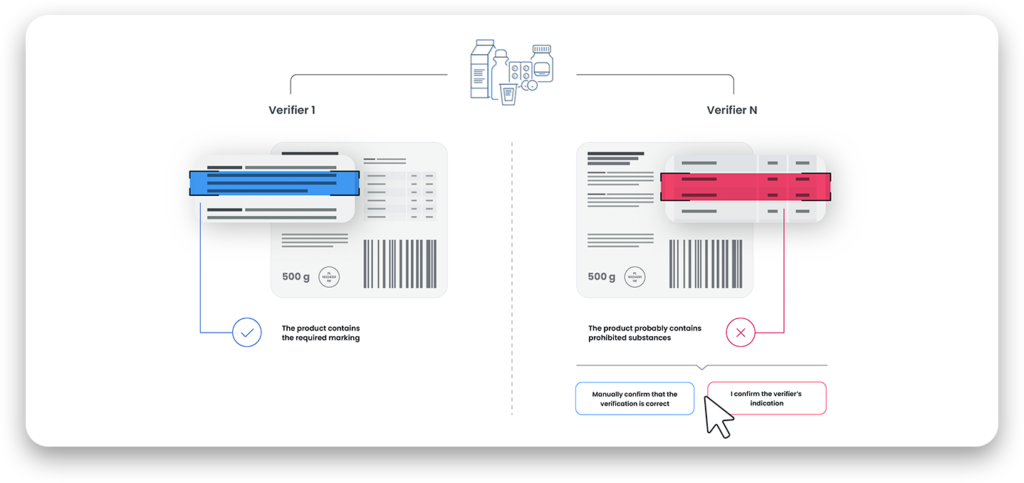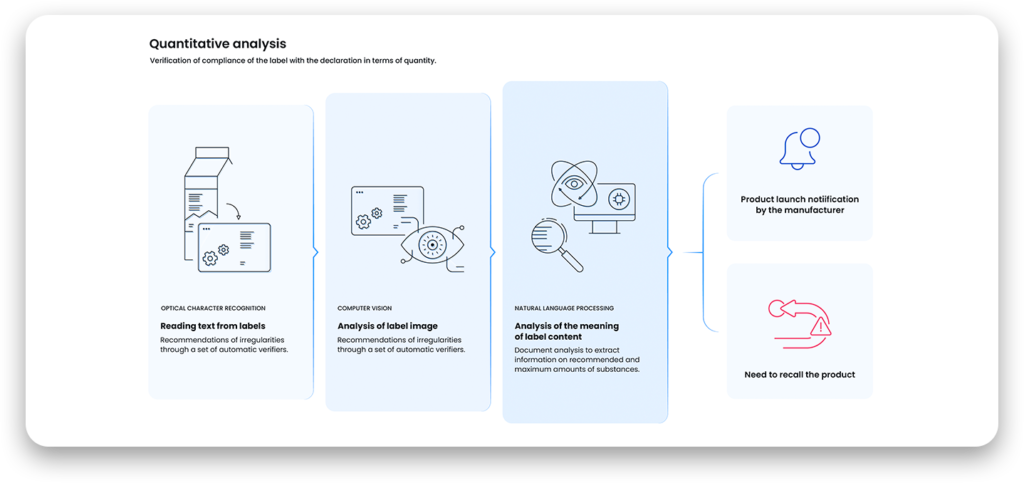The digital tools used by a public health department needed to be more efficient to handle the thousands of inquiries received from business owners. We analyzed this complex, multi-level process and proposed an AI-based, 21st-century solution.
Public Health Department
One of the European Public Health Institutions oversees sanitary safety in the country, handling various activities from hygiene and environmental health to epidemiology.
This institution also regulates the quality of food and consumer products, ensuring their safe introduction to the market.
Manual Notification Handling
When a food manufacturer introduces a new product to the market or changes the composition of an existing one, they must send a special notification to the institute.
Officials receive and manually verify the correctness of these notifications by checking:
- Whether the product’s chemical composition meets specific legal requirements.
- Whether the manufacturer has informed about the product’s origin.
- Whether the label is translated into Polish.
And many other criteria required by national and European law.
After checking all variables, officials either approve the correct application or reject it if it fails to meet any requirement.
Automating and Simplifying the Process
The Public Health Institution faced the challenge of automating and simplifying the notification verification process for new products.
The existing process was time-consuming – the staff, despite their high competence, could only process several applications per day, while tens of thousands were received annually.
Additionally, the flood of notifications was irregular; half of the year’s notifications could arrive in one month, creating more delays.
The consequences were significant. The prolonged queues risked allowing products with unapproved substances to enter the market, endangering consumer health and jeopardizing the reputation of producers.
There was a need to replace manual labor with an automated system to significantly increase efficiency and allow employees to utilize their potential better.
A Machine Learning solution was needed.
As artificial intelligence specialists, we were approached by Sotfiq – our shareholder and primary technology provider for the Public Health Department – to design a system to address this issue and elevate the institution to a new technological level.
The project carried significant weight, as the end client was a state institution, and the product was intended for every consumer in the country. Recognizing the need for a trusted and experienced AI and machine learning specialist, we chose Stermedia to help us with the task.
-SOFTIQ employee
Understanding the Problem Thoroughly
We began the project with consultations with the Institute’s employees.
Initially, we met to establish a common communication language. This was important because they used many terms that meant something different in ordinary language and within the department.
And vice versa – since officials don’t work with new technologies daily, we also had to explain and standardize our terminology.
The second part of the workshops focused on profoundly understanding the institutes’ work environment. We went step by step through the notification handling process, identifying areas for improvement along the way.
We also delved into relevant legal regulations to navigate the process effectively, from European journals to national legislation.
Only after establishing common, uniform terminology and a complete understanding of the process and legal environment did we move on to proposing solutions.
We conducted a week-long brainstorming session with employees, where we suggested appropriate technologies for various process stages.
The employees then evaluated their practicality and compatibility with the institution’s operational realities, and a final vision of the solution was crafted.
Designing the System
We designed a solution that automates the label verification process using OCR (Optical Character Recognition), CV (Computer Vision), and NLP (Natural Language Processing).
OCR and CV technologies automatically recognize label contents, including text, graphics, and ingredient tables.
NLP is used for further analysis of label contents; after being processed by OCR and CV, it enables a deeper understanding of the content, including identifying threats and irregularities.
We developed a series of automatic verifiers that classify information on labels based on established criteria.

Our system automatically detects and signals any irregularities and generates a set of recommendations for officials: it advises whether a submission can be accepted or not, highlighting the reasons for rejection.

Results
The initial results came during the workshop phase: our external perspective on the processing showed how much the process could be improved, not just technologically.
The workshops provoked employee discussions about the process, from common naming to universal practices in customer service. Together with our client’s employees, we standardized and organized the knowledge within the organization.
More importantly, our client was provided with a comprehensive project specification encompassing a complete technical solution, the necessary infrastructure for its maintenance, and the essential team for its implementation.
The specification could serve as part of the tender documentation or as the foundation for development with their current technology suppliers.
However, our workshops and solution proposal pleased the employees so much that they decided to commission us to create this system.
We are currently working on turning the prepared specification into a ready-to-use product, saving hundreds of man-hours annually, so…
To be continued!
- Innovative AI-Based Solution
- Full Project Specification Delivered
- Improved Processing Efficiency
- Enhanced Safety and Compliance
We’ve been impressed with the organization and flexibility of Stermedia’s team. Their ability to adapt quickly and provide precisely the right talent at the right time was remarkable. Our end client was equally satisfied with the outcomes, leading to an expansion of the team to several members.
– SOFTIQ employee



